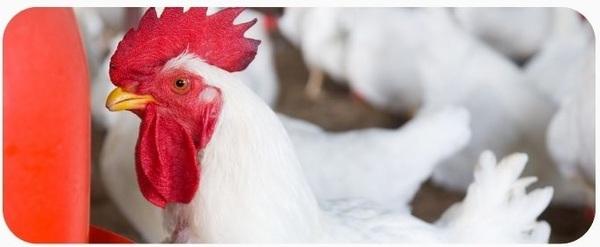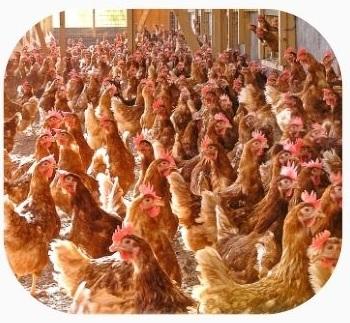
Content sponsored by:
LIPTOSA
Respiratory Health In Poultry
Published: October 22, 2021
By: Carlos López Tomé, Veterinarian, Technical Department at Liptosa
Respiratory problems are considered one of the most important challenges in poultry farming, with a significant economic and productive impact, not just because of their high morbidity and mortality, but also because of the decrease production and higher seized materials in the slaughterhouse they cause. Furthermore, main reasons for the use of antimicrobials in aviculture are related to respiratory and digestive diseases.

Among the main respiratory issues affecting the poultry farming, we can highlight those of bacterial origin caused by Mycoplasma, E.coli and Avibacterium paragallinorum (infectious coryza) and those of viral origin such as Newcastle disease, Avian Influenza, Infectious Bronchitis and Infectious Laryngotracheitis.
Despite the fact each disease has its own peculiarities regarding aetiology, affected species, transmission routes, prevention and treatment programs…, all of them occur with a similar symptomatology, and a differential diagnosis based just on symptoms and lesions may not be very accurate. Likewise, regardless its aetiology, young birds, due to the immaturity of their immune system, are more susceptible to develop severe symptoms.
Furthermore, there are numerous external factors that create favourable conditions for the development of the respiratory pathogens:
- Environmental: ventilation, air quality (dust, ammonia), humidity, temperature.
- Management: density, litter management, vaccination programs.
- Host: breed, age, immune status.
The avian respiratory system is the most efficient in the animal kingdom. They breathe indistinctly through the nose (nares) or through the mouth. Unlike mammals, they lack a diaphragm, the lungs are rigids and the air movement in the lungs is unidirectional.
It has its own defence mechanisms, aimed to prevent the invasion of external factors that may cause any damage. As first defence level, we have the membrane that lines the nasal passages, the trachea and the bronchi. It has a muco-ciliated epithelium that secretes mucus for preventing the entry of foreign particles (the mucus wraps the small particles, which are then removed by ciliary movements toward the pharynx, where it is swallowed and excreted).
However, an excessive mucus’ production, as occurs in most of the respiratory diseases, may obstruct the airways. The build-up of mucus, beside reducing the oxygen intake and therefore, the feed intake, will also favour the bacterial colonization.
The prevention programs established in the farm for controlling the appearance of respiratory problems are based on measures aimed to:
1. Control external factors such as ventilation, density, temperature, humidity, litter condition, biosecurity measures and others that may favour the appearance and the spread of the disease.
2. Set up appropriate vaccination programs to the production type.
3. Administer an effective treatment, both etiological and symptomatic.
2. Set up appropriate vaccination programs to the production type.
3. Administer an effective treatment, both etiological and symptomatic.
Liptosa, true to its philosophy “the green way of life” keeps betting hard for the development of natural solutions aimed to achieve a more sustainable production, minimizing the incidence of pathogenic processes while reducing the use of antimicrobials.
For the last years, the use of phytobiotics has become an indispensable tool within the programs aimed to reduce the use of antimicrobials, due to the numerous properties of its active compounds.
Essential oils from Eucalyptus globulus have important biological activities, including its antibacterial, anti-inflammatory, antiseptic and analgesic effects (Cimanga et al., 2002), as well as antioxidant properties. (Lee and Shibamoto, 2001; Damjanovic-Vratnica et al., 2011).
Furthermore, in studies carried out in broilers co-infected with multiple respiratory etiologic agents, the use of peppermint and eucalyptus essential oils reduced the mortality rate in both the control group and the challenged group. (Barbour et al., 2012).
Likewise, it has been shown that essential oils from Thymus vulgaris, Eucalyptus globulus, Allium sativum, Mentha piperita among others positively influence the birds’ immune system, promoting the production of immunoglobulins and stimulating the release of the γ interferon (Awaad et al., 2010; Faramarzi et al., 2013; Gopi et al., 2014; Krishan and Narang, 2014). Experiments carried out using essential oils from mint, eucalyptus and turmeric in concurrence with vaccination programs (Newcastle disease, Infectious bronchitis and Gumboro) revealed that the essential oils promoted the production of antibodies, improving, therefore, the vaccine efficacy. (Awaad et al., 2010; Madpouly et al., 2010; Barbour et al., 2011; Faramarzi et al., 2013).

We should not forget either about the beneficial effect that certain essential oils have over the respiratory system, relieving some of the symptoms most commonly detected in respiratory problems, such us congestion, irritation, breathlessness... Thus, eucalyptus has been traditionally used, also in human medicine, because of its expectorant and mucolytic properties. It helps to reduce the viscosity of the mucus, favouring its elimination and the airways clearing.

Phytocompounds like menthol, thymol and eucalyptol activate the cold receptors, causing in the animals a freshness feeling, which favour the breathing and the feed intake.
Our proposal?
Hygen Pro® RESPIR FRESH arises as a response to the need for a greater control of respiratory issues in the farm.
It is a phytobiotic solution which combines different botanical compounds with vitamins, aimed to support and improve the functionality of the respiratory system and to strengthen its natural defences, thus minimizing the incidence of respiratory problems.
Hygen Pro® RESPIR FRESH is available in both liquid and premix form, which offers a higher versatility in its use.
How to use it?
- In critical periods such as heat stress, post-vaccination or unfavourable environmental conditions among others, for reducing the risk of respiratory problems.
- In case of respiratory events, as synergic to the etiological treatment and for symptoms relief.
- In conjunction with vaccination programs.
- Nebulised, as respiratory symptoms relief.
Just breath, naturally!
*Certain information associated with products, their composition and claims may be different depending on the geographical region and may not be applicable in all countries. Liptosa reserves the right to adapt to the requirements and legislation in each case.
The information and technical recommendations provided herein are based on Liptosa's current knowledge and experience.
Liptosa reserves the right to update the information and arguments contained in this platform, as well as to make any changes to this information or recommendation at any time, without prior or subsequent notice.
Related topics:
Authors:

Influencers who recommended :
David Revilla, Carlos López Tomé and 1 moreRecommend
Comment
Share

Would you like to discuss another topic? Create a new post to engage with experts in the community.



